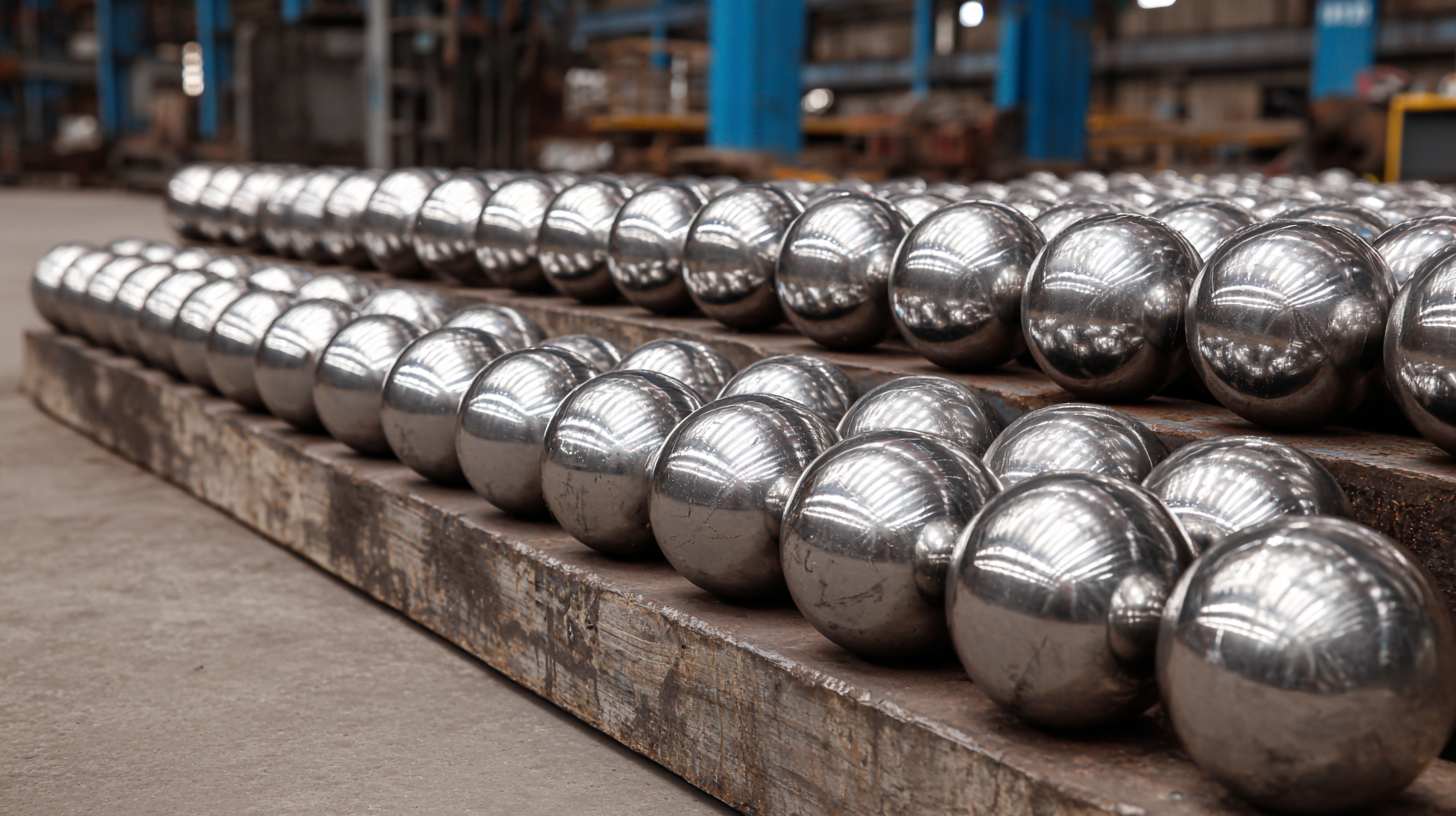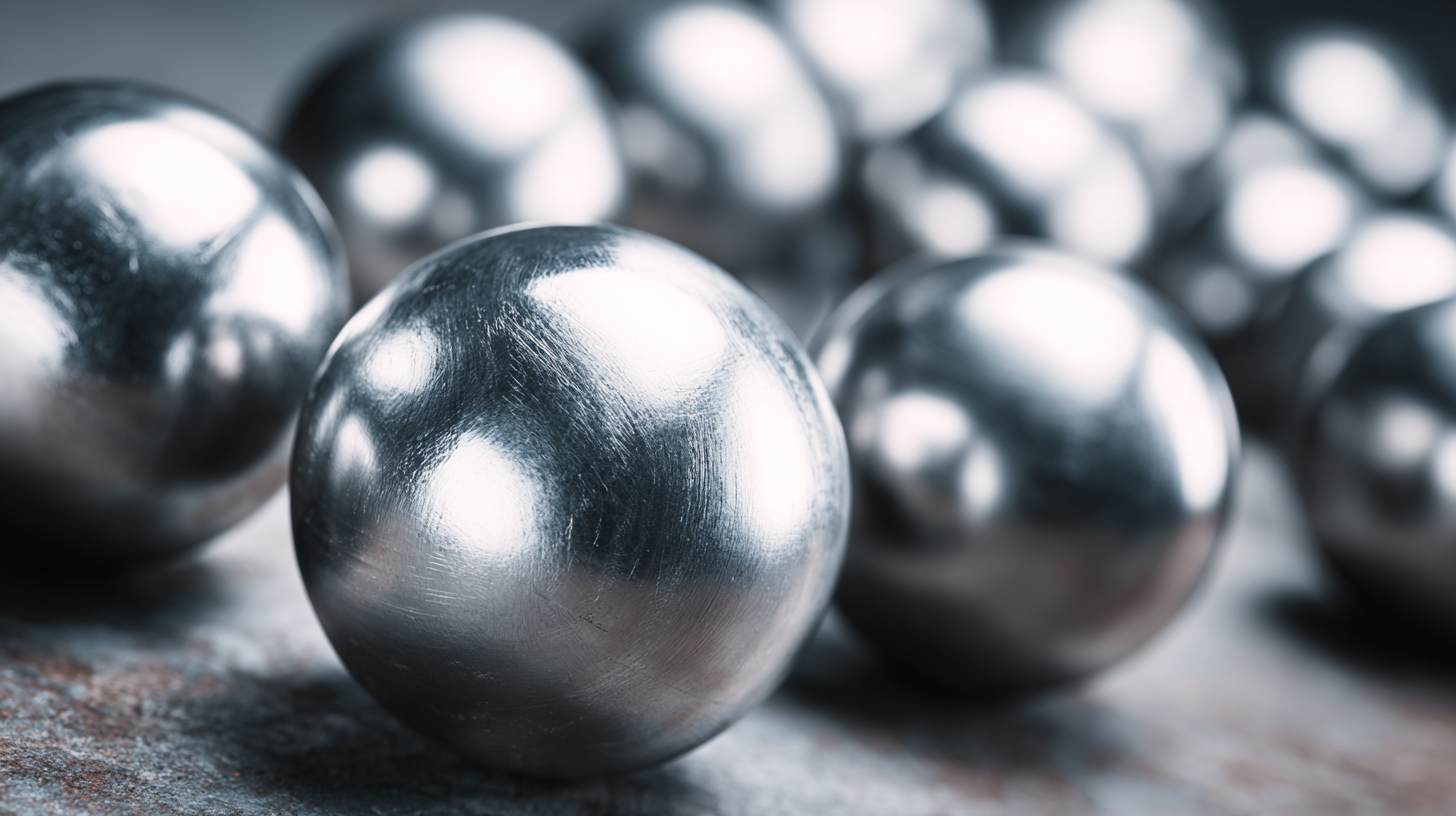
In the rapidly evolving world of manufacturing, the demand for high-quality Stainless Steel Balls is on the rise, with applications spanning across various industries, from automotive to aerospace. As we look toward 2025, understanding the emerging trends in Stainless Steel Ball technology becomes essential for businesses aiming to maintain a competitive edge. This comprehensive buyer's guide will not only highlight the latest advancements in this field but also provide you with a structured checklist to help identify and select reliable suppliers. With the market flooded with options, knowing what to look for in terms of quality, durability, and cost-effectiveness will be crucial for making informed purchasing decisions. Whether you're a seasoned buyer or new to the landscape, our guide aims to equip you with the necessary tools to navigate the complexities of sourcing Stainless Steel Balls effectively.

As we look towards 2025, the landscape of
stainless steel ball technology is set to undergo significant transformations driven by emerging innovations in manufacturing processes.
One of the most notable advancements is the integration of automated production systems, which enhances precision and efficiency.
These systems employ advanced robotics and machine learning techniques to optimize the manufacturing process, reducing human error and increasing output.
This technological leap not only streamlines production but also allows for the creation of
customized stainless steel balls that meet the specific demands of various industries.
In addition to automation, the introduction of sustainable manufacturing practices is gaining traction.
More manufacturers are adopting eco-friendly materials and energy-efficient processes to minimize their environmental footprint.
Innovations such as additive manufacturing, or 3D printing, particularly stand out, enabling the creation of complex geometries and reducing waste.
This shift towards sustainability not only aligns with global environmental goals but also meets the growing consumer demand for environmentally conscious products.
As these trends continue to develop, buyers will benefit from enhanced quality and
a broader range of options tailored to their unique applications.
When selecting stainless steel balls, several key factors come into play that significantly impact the decision-making process. Material composition is of paramount importance, as the type of stainless steel used can determine durability, corrosion resistance, and overall performance in various applications. For instance, AISI 440C stainless steel, known for its high hardness and wear resistance, is frequently favored in industries requiring precision and longevity, such as aerospace and automotive sectors.

Another crucial factor is the manufacturing process. Advances in production techniques, such as precision grinding and polished finishes, enhance the accuracy and minimize surface imperfections of stainless steel balls. Reports indicate that improved manufacturing precision can lead to better performance in dynamic applications, where even minor deviations can lead to significant failures over time. Additionally, compliance with industry standards and regulations, such as ISO 9001, ensures that the stainless steel balls meet the necessary quality and safety requirements, providing further assurance to buyers about the reliability of their investment. By considering these factors carefully, buyers can make informed decisions that align with their specific operational needs.
As we move towards 2025, the stainless steel ball industry is increasingly influenced by sustainability trends that reshape production practices. According to a recent survey by the World Steel Association, nearly 50% of steel producers now prioritize eco-friendly methods, reflecting a significant shift towards sustainable manufacturing. This trend is propelled by stricter regulations on greenhouse gas emissions and a growing demand for environmentally responsible products from consumers.
In addition, advancements in recycling technologies are further boosting the sustainability of stainless steel ball production. A 2023 report by the International Stainless Steel Forum revealed that over 70% of stainless steel is recycled, emphasizing the industry’s commitment to circular economy principles. With innovations in production processes that employ renewable energy sources, manufacturers are not only reducing their carbon footprint but also improving cost-efficiency. Buyers of stainless steel balls should consider these sustainability practices as key factors influencing both quality and long-term viability in the marketplace.
In the realm of stainless steel ball technology, the comparative analysis of different stainless steel grades has gained significant attention, especially as we look toward 2025. Various grades of stainless steel, such as AISI 304, AISI 316, and AISI 440C, each bring unique properties to the table, influencing their suitability for specific applications.
For instance, while AISI 304 is known for its excellent corrosion resistance and formability, AISI 316 offers enhanced durability in more aggressive environments, making it ideal for marine and industrial applications. AISI 440C, with its higher carbon content, provides superior hardness and wear resistance, catering to precision mechanisms and high-stress environments.

Understanding these distinctions is paramount for buyers seeking to optimize performance and longevity in their applications. The selection process involves evaluating not only corrosion resistance and strength but also the wear characteristics impacted by the manufacturing process.
Recent studies highlight how processes like laser powder bed fusion can significantly alter the surface properties of stainless steel balls, affecting their wear performance. As industries continue to innovate and adapt, recognizing the nuances between stainless steel grades will be critical in making informed purchasing decisions and ensuring optimal application performance in various sectors.
As we look ahead to 2025, the trends in
stainless steel ball technology are poised for revolutionary advancements in design and functionality. The integration of
advanced materials, such as ceramics, is reshaping the landscape of stainless steel ball production, enhancing their performance in various applications.
These innovative designs are not only focused on improving durability but also on reducing friction, which is critical in industries like aerospace and renewable energy vehicles.
Moreover, sustainability is becoming a core focus in the development of these components. As sectors such as semiconductors and defense continue to evolve, the demand for high-performance materials that can withstand extreme conditions is on the rise. Manufacturers are likely to invest in research to create stainless steel balls that leverage these advancements, blending functionality with eco-friendly practices. Consequently, buyers can anticipate a broader range of options that not only meet stringent performance criteria but also align with environmental sustainability goals.
